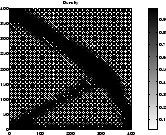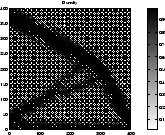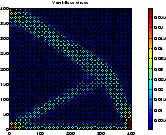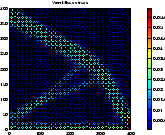
Computational & Technology Resources
an online resource for computational,
engineering & technology publications
engineering & technology publications
Civil-Comp Proceedings
ISSN 1759-3433
ISSN 1759-3433
CCP: 83
PROCEEDINGS OF THE EIGHTH INTERNATIONAL CONFERENCE ON COMPUTATIONAL STRUCTURES TECHNOLOGY
PROCEEDINGS OF THE EIGHTH INTERNATIONAL CONFERENCE ON COMPUTATIONAL STRUCTURES TECHNOLOGY
Edited by: B.H.V. Topping, G. Montero and R. Montenegro
Paper 213
Mixed Finite-Element Approaches for Topology Optimization
C. Cinquini, M. Bruggi and P. Venini
Department of Structural Mechanics, University of Pavia, Italy
Full Bibliographic Reference for this paper
C. Cinquini, M. Bruggi, P. Venini, "Mixed Finite-Element Approaches for Topology Optimization", in B.H.V. Topping, G. Montero, R. Montenegro, (Editors), "Proceedings of the Eighth International Conference on Computational Structures Technology", Civil-Comp Press, Stirlingshire, UK, Paper 213, 2006. doi:10.4203/ccp.83.213
Keywords: topology optimization, stress constraints, mixed finite elements.
Summary
The main motivation behind this paper resides in three apparently independent issues that are conversely tightly connected:
- the still open-problem of obtaining stress-constrained optimal solutions. Most existing contributions in the field of topology optimization do not even introduce any stress constraint and the consequent optimal solutions are likely to be practically unfeasible because of local stress violations. As pointed out in [2] two main questions need be addressed at this regard, namely the computational method should be able to handle many local constraints and a suitable stress criterion should be devised capable to handle intermediate density materials;
- the well-known checkerboard pattern problem that is likely be encountered unless suitable remedies are adopted. Traditionally, one resorts to some filtering approach imitating more or less what is done in the area of image processing [3];
- the space-discretization scheme chosen to approximate the problem. In most applications, classical displacement-based finite-element approaches are adopted. By so doing, one gains numerical tractability but the use of such a simple scheme has two main drawbacks. On the one hand stresses are not primary variables of the formulations and therefore imposing a stress constraint calls for the computation of an approximate strain field that is converted to the stress field by the adopted constitutive law. Secondly traditional displacement schemes do not permit the modelling of extreme materials such as incompressible ones because of the well-known locking problem.
References
- 1
- Brezzi F. and Fortin M. 1991. Mixed and Hybrid Finite Element Methods. Springer-Verlag, New York.
- 2
- Duysinx P. and Bendsøe M. Topology optimization of continuum structures with local stress constraints. International Journal for Numerical Methods in Engineering 1998; 43:1453-1478. doi:10.1002/(SICI)1097-0207(19981230)43:8<1453::AID-NME480>3.0.CO;2-2
- 3
- Sigmund O. and Petersson J. Numerical instabilities in topology optimization: A survey on procedures dealing with checkerboards, mesh-dependencies and local minima. Struct. Multidisc. Optim. 1998; 16(1):68-75. doi:10.1007/BF01214002
purchase the full-text of this paper (price £20)
go to the previous paper
go to the next paper
return to the table of contents
return to the book description
purchase this book (price £140 +P&P)



